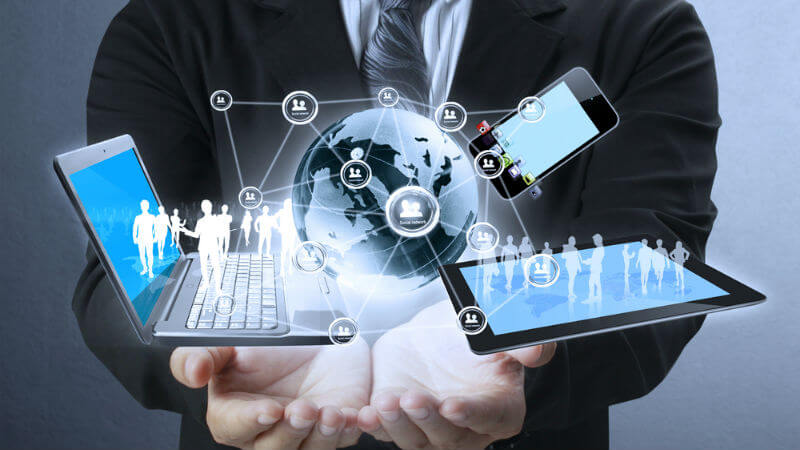As we had already told you in the previous post IT Trends for 2020 - Part 1 of 4, starting next year the panorama of digital transformation will undergo changes, and the trends that have guided the digitalization initiatives of organizations are going to get out of what can already be considered traditional.
We will recount these new IT technologies by 2020.
New generation of connections - WiFi 6
While cellular networks are about to make a great evolutionary leap, the same is happening with the classic WiFi networks. The arrival of the new WiFi 6 standard will have a significant impact in many areas. These networks are used more in domestic and office environments, but with the great increase in speed that the new standard will bring, their industrial use cases could multiply rapidly.
The first solutions are expected to reach the market throughout 2020, and experts believe that the greatest advantage of this technology is that it will find a great synergy with 5G, complementing the external connectivity of this cellular technology with better indoor performance. This would allow us to offer complete solutions that cover all the needs of wireless data transmission, from end to end.
A download speed 3 times faster, an efficient connection, a higher number of device connections simultaneously, more efficiency, speed, bandwidth and a smarter management of all those connections.
Currently, the current WiFi standard is experiencing difficulties in managing the increasing volume of connected devices, something that WiFi 6 will solve, regardless of whether the base of existing devices does not have this technology.
The multicloud extends
Just as in the past it has evolved from the implementation in a single data center to the installation of CPD in two or more locations, corporations today work with multiple clouds to deploy their applications safely. Incorporating a single cloud into the IT structure can result in falls, as it was to have only one CPD in the past. Applications that require high data consumption will need hybrid and multicloud designs to ensure resilience and uniform performance for their users.
5G Everywere
Cellular communications networks have long been suffering from saturation problems. In developed countries the use of 4G is massive and in those in the process of development 3G is still used, with similar results.
In any business area, having more bandwidth and lower latency will improve efficiency. But beyond thinking about all the areas that will benefit from the 5G deployment, companies should begin to anticipate new security measures.
5G promises to exceed the expectations of consumers and organizations regarding connection capacity, bandwidth, minimum latency, etc.
Commercial applications for mobile networks are being reinforced by a large number of business and industrial use cases, which will boost the deployment of this technology in new areas, replacing current technologies.
Even despite US efforts to unseat the Chinese giant Huawei, many countries are determined to implement their technologies to achieve a rapid and effective deployment of new networks. Because the industry cannot wait for the resolution of commercial conflicts with interests far from its own, and demands solutions now.
Cybersecurity vs. digital transformation
Next year, cybersecurity will be aligned with the business objectives and managers must incorporate it at every step of the digital transformation.
In addition, and given the rapidity with which the landscape of computer attacks evolves, machine learning will also be incorporated into cybersecurity, to collect information and execute changes in programs or applications as a form of prevention and defense against detection. of risks.
More visual communications.
The massive arrival of video to communications will cause audio-only conferences to decrease in the corporate arena. Thanks to the enormous capacity of the cloud resources and the available computing power, the way of visualizing the information evolves.
On the horizon, more productive virtual meetings are planned than if they were in person, with notes and actions automatically collected, distributed at the moment to the interested parties and in which the next meeting is also scheduled without intervention of the participants. Administrative work will decrease, for the benefit of productivity.
Standardization of connected vehicles and smart cities
With the arrival of technologies such as 5G and computing in the extreme, which will be able to expand greatly over the next year, ideas that are currently not giving the expected results will finally come alive.
Two of the most important connectivity ideas, perhaps, are connected vehicles and smart cities. The initiatives of local governments to create Smart Cities have been limited to automating some processes and better monitoring certain infrastructures within cities, such as transportation or basic supplies managed by the administration.
In these two fields, the arrival of 5G and the new idea of perimeter computing will lay the foundations for new levels of automation, intelligence applied to data and services to consumers and businesses. And it will be from 2020 when this can come true
The undisputed leader of this technology, is Tesla and, although other brands are betting hard to build their ecosystem of driverless cars, it still seems that they are far from the level reached by the firm of Elon Musk.

